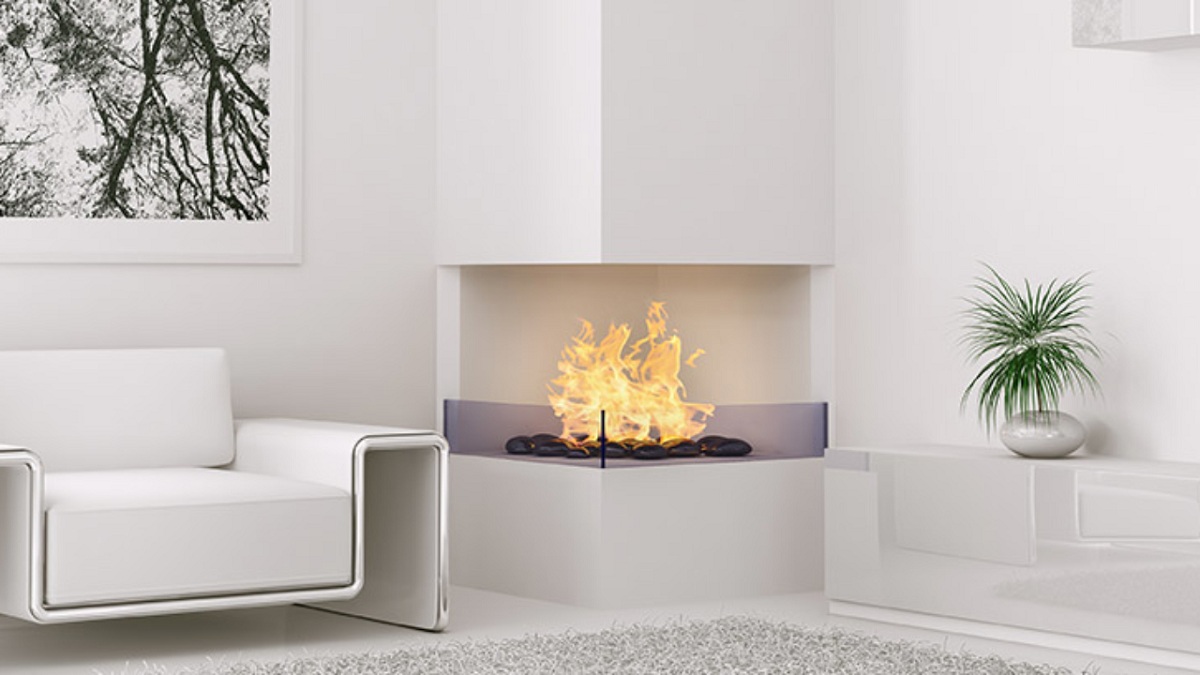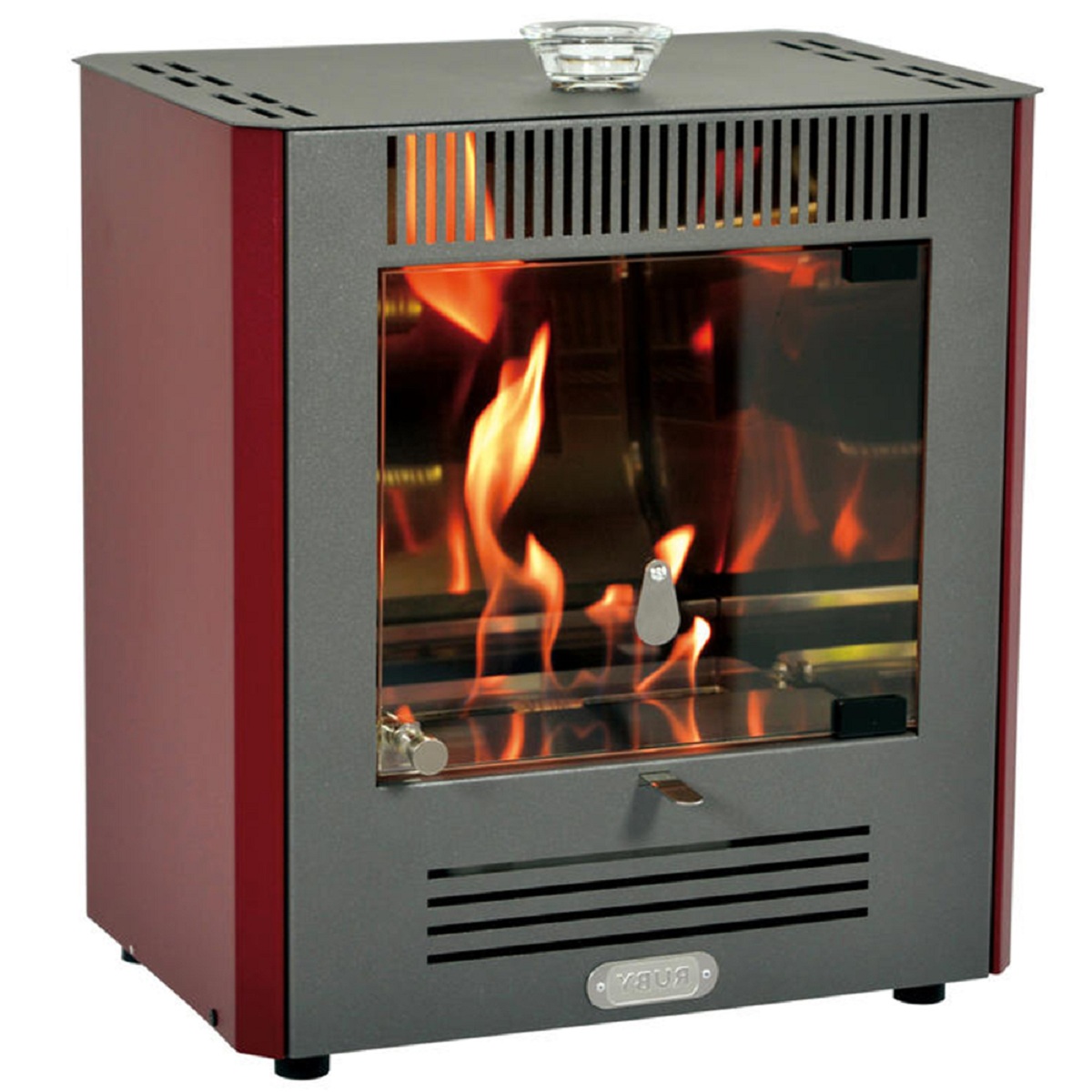
Conceptually, the word home represents the warm place of the family, the place where we feel comfortable and sheltered. The installation of a fireplace, either wood or bioethanol, gives us warmth and freshness, allowing us to have a relaxing and quiet meeting place. Traditionally, fireplaces have been wood-burning, and having one has its advantages and disadvantages. They are preferred for the heat they provide, however the main disadvantage is that burning wood tends to produce smoke and ash, which can cause bad odors and discomfort in the home. The bioethanol stoves They have different pros and cons to consider.
For this reason, we are going to dedicate this article to telling you what the main pros and cons of bioethanol stoves are.
What are they

These are stoves that use bioethanol or ethanol as fuel. It is considered an ecological product because its combustion does not pollute the environment like fossil fuels. It is obtained by processing materials of renewable source, such as corn, sugar cane, sorghum, potato and wheat.
The reality is that compared to other types of conventional fuels, there are still no studies that demonstrate its energy profitability, since current bioethanol production methods require large amounts of energy from fossil fuels compared to the energy obtained from the fuels produced.
It does not require any device to evacuate oil vapours, so it can be placed in any room of more than 25 cubic meters, thus ensuring normal ventilation. Any home needs regular daily ventilation, 10 minutes of fresh air a day is enough.
Its operation is simple. Simply add fuel up to the mark indicated by the manufacturer. The burner must be completely closed and cooled down, taking care not to spill the container or spill the bioethanol. You can do it with a funnel and clean with a cloth to avoid spills. To light a fireplace, just approach the lighter or match carefully, as small deflagrations are normal.
Bioethanol stoves

The problem of environmental pollution makes us have to look for fuels that are less harmful to our heating. Over the years bioethanol has become quite a famous fuel in the homes. Therefore, it is difficult to choose which are the best bioethanol stoves, given their many models on the market.
When you want to buy a bioethanol stove you have to look at several parameters that will determine the quality of the product. The first is consumption. The general objective of the purchase is have heating economically but without losing quality. The cost of the stove or fireplace is something important to consider. The consumption of bioethanol depends on the size of the stove, the number of burners and the opening of the flame.
Another parameter that we must take into account is the power. The more power the fireplace has, the more consumption the appliance will have. It is best to have a good balance between power and consumption.
Finally, an important piece of information is the size. The larger the product in question, the more you will consume. This makes us move away from this relationship between power and consumption. Therefore, you must choose a stove that fits the size of the room we want to heat.
Do bioethanol stoves heat up?

Bioethanol fireplaces supply a type of heat by convection. This is not only capable of heating the room we are in, but can also be adjusted to other rooms. It is not usually used as main heating.
They are designed to be placed in the rooms where we spend the most time. Depending on their power and size they will heat more or less. A usual power in biofireplaces is 2 KW. With this power we can heat a room of approximately 20 square meters. In this way, depending on the size of our room, we can know what power to buy.
Pros and cons of bioethanol stoves
The use of these devices have their advantages and disadvantages.
These are its advantages:
- They are ecological and easy to install.
- They do not need extractors or ventilation tubes.
- Their heat level is quickly reached.
- They bring an extra design to the home.
- They are safe and easy to disable.
- The price is quite affordable.
- They have little maintenance.
Among its drawbacks we find:
- Bioethanol is somewhat more expensive.
- Although it does not give off smoke or ash, it does give off a noticeable odor.
- The ability to heat is more limited. An adequate oxygen level must be present to avoid high CO2 concentrations.
- The minimum distance you must have on the furniture is one meter.
Are they safe?
With the issue of fires and heating, the question always arises as to whether they are safe. bioethanol stoves they are quite safe, since its deactivation is very simple. In addition, many models have some protectors for the flames that help prevent us from accidentally getting burned.
Its level of danger is much lower than the traditional firewood ones, since there are no sparks or burning logs. For our bioethanol stove to be completely safe, we must respect the safety distance of one meter.
Bioethanol must be replenished as it is consumed. There are different types and brands of bioethanol. According the higher quality it has, the more heating capacity it will have, in addition to releasing less odor.
The consumption of bioethanol depends entirely on the power of the fireplace and the lighting time. Each chimney has a certain tank capacity. Depending on what it can house, the combustion will last more or less.
One of the factors to take into account when consuming bioethanol is the intensity of the flame and the exit hole. Usually burns out between 0,20 and 0,60 liters of bioethanol per hour. It can be said that this is the standard consumption, so with a liter of fuel we could have the flame at intermediate intensity between 2 and 5 hours.
I hope that with this information you can learn more about the pros and cons of bioethanol stoves.